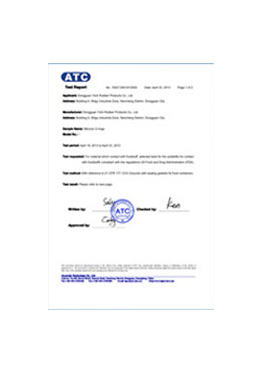Dec . 03, 2024 18:38 Back to list
hydraulic motor seals
Understanding Hydraulic Motor Seals Importance, Types, and Maintenance
Hydraulic motors are essential components in various industrial applications, converting hydraulic energy into mechanical energy. These motors are widely used in construction machinery, automotive systems, and manufacturing equipment. One critical element that ensures the efficient and reliable operation of hydraulic motors is the hydraulic motor seal. This article explores the importance of hydraulic motor seals, the different types available, and best practices for maintenance.
Importance of Hydraulic Motor Seals
Hydraulic motor seals play a crucial role in maintaining optimal performance and longevity of the motor. Their primary function is to prevent fluid leakage, which can result in significant efficiency losses and environmental hazards. A compromised seal can lead to decreased hydraulic pressure, impacting the motor's performance and potentially causing complete system failure.
Furthermore, proper sealing is essential for preventing contaminants from entering the hydraulic system. Dust, dirt, and other foreign particles can cause wear and tear on motor components, leading to premature failures. By ensuring a tight seal, manufacturers can guarantee the smooth operation of hydraulic motors and extend their lifespan.
Types of Hydraulic Motor Seals
Hydraulic motor seals come in various designs and materials, each suited for specific applications and fluid types. Here are some common types
1. O-Rings One of the most widely used types of seals, O-rings provide excellent sealing capabilities. Made from rubber or elastomeric materials, they are effective in creating a tight seal between two mating surfaces. Their flexibility allows them to adapt to minor misalignments.
2. U-Cups U-cup seals are another popular choice for hydraulic motors, especially in applications with dynamic movements. They offer a higher sealing capability and can handle higher pressures than O-rings. Their unique design helps to maintain constant contact with the shaft, minimizing leakage.
3. Lip Seals Lip seals are designed with a flexible lip that fits tightly against a rotating shaft, providing effective sealing against fluid leaks. They are particularly useful in applications where rotational motion is involved, and they offer excellent resistance to wear and high temperatures.
4. Square Cut Seals These seals are shaped like a rectangular block and are primarily used in static applications. They provide a reliable seal under pressure but are limited in dynamic applications due to their structure.
hydraulic motor seals

5. Composite Seals Designed for specialized applications, composite seals combine different materials to provide enhanced sealing performance. They are particularly useful in high-pressure environments or when exposed to aggressive fluids.
Maintenance of Hydraulic Motor Seals
Maintaining hydraulic motor seals is crucial to ensure their effectiveness and longevity. Here are some best practices
1. Regular Inspection Routine inspections can help identify any signs of wear, damage, or fluid leakage. Regular checks enable timely replacement of seals before a minor issue escalates into a more significant problem.
2. Fluid Quality Management Using clean hydraulic fluids is essential for the longevity of seals. Contaminated fluids can cause degradation of seal material, leading to failures. Employing filtration systems and maintaining fluid cleanliness can greatly enhance seal life.
3. Temperature Control Operating in excessively high or low temperatures can adversely affect seal performance. Monitoring and controlling the operating temperature within the recommended range helps maintain the integrity of the seals.
4. Proper Installation Incorrect installation can lead to premature seal failure. It is essential to follow manufacturer guidelines for the correct installation procedures, including using the right tools and applying adequate torque.
5. System Pressure Monitoring Keep track of the hydraulic system’s pressure. Abrupt pressure fluctuations can cause stress on seals and may lead to leaks. Implementing pressure relief valves can help manage pressure spikes.
Conclusion
Hydraulic motor seals may appear to be small components compared to the motor itself, but their impact on system performance is significant. By understanding the different types of seals available and adhering to proper maintenance practices, operators can ensure their hydraulic systems run efficiently and reliably. Investing time and resources into seal maintenance can prevent costly downtime and extend the life of hydraulic motor components, thereby enhancing overall productivity in industrial applications.
-
Wiper Oil Seal: Our Commitment to Clean Hydraulics
NewsAug.13,2025
-
Hydraulic Oil Seal for Self Discharging Cars
NewsAug.13,2025
-
Hub Oil Seal for Agricultural Tractor Hubs
NewsAug.13,2025
-
Skeleton Oil Seal with NBR Material
NewsAug.13,2025
-
Rotary Lip Seal for High Pressure Applications
NewsAug.13,2025
-
Cylinder Seal Kits Our Legacy of Hydraulic Trust
NewsAug.13,2025
-
Unlocking the Potential of Hydraulic Systems with Essential Sealing Solutions
NewsAug.06,2025
Products categories
















